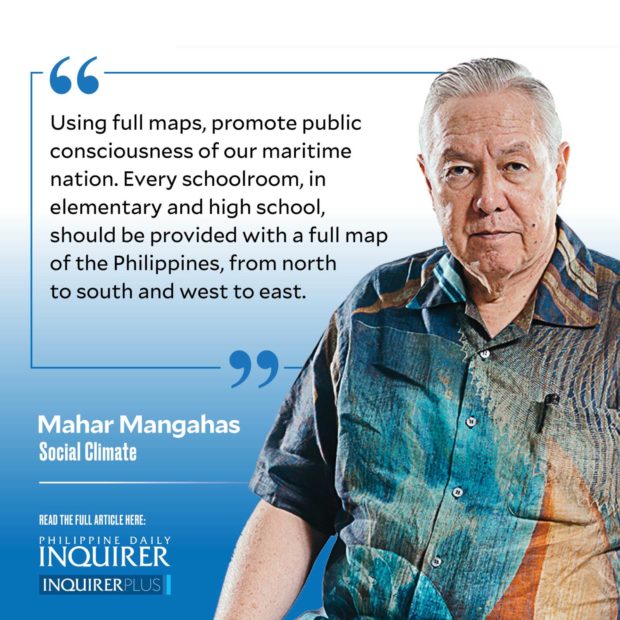A Prosperous, Archipelagic, Maritime Nation” is the subtitle of Pagtanaw 2050, the national foresight plan launched by the National Academy of Science and Technology last Nov. 24.
“Foresight” is a relatively new buzzword in the development biz. It implies not simply forecasting the future, but anticipating a broad range of futures, and adapting effectively to whatever futures come along. Its key descriptors are anticipatory, adaptive, and agile.
Pagtanaw 2050 is a massive, 360-page compendium of technologies, built from the work of 335 stakeholders from government, higher educational institutions, and NGOs, who see the archipelagic and maritime nature of the Philippines as essential to their vision.
Pagtanaw 2050’s precursor was the 1975-77 study on Population, Resources, Environment and the Philippine Future (PREPF), done by researchers from the Development Academy of the Philippines, UP School of Economics, and UP Population Institute.
PREPF’s vision of the year 2000, condensed in the book, “Probing Our Futures” (1980), was of a population ranging from 64 million to 84 million Filipinos. Its general prescription was population restraint (via family planning), to allow our dwindling natural resources to cope. The actual outcome of 78 million in 2000 was closer to the high side, showing that the message was barely heeded.
Now, in Pagtanaw 2050, the general prescription is the protection of our maritime resources, with all the scientific, technological, legal, and social weapons we can muster. We need a stronger navy, plus alliances with naval powers. We need satellites in the sky, to watch over our far-flung exclusive economic zones (EEZs). We need marine biologists and marine geologists. We need investments in seaports and shipbuilding more than in roads and land transportation. We already have the world’s largest seagoing work force; we need to improve in terms of quality rather than quantity.
And let us remember to enlist the cooperation of the entire people, by educating them from elementary school about the nature and scope of the Philippine maritime nation. This education should start with truthful mapping, in the same way that the Philippines conducted, and ultimately won, its case in the arbitral tribunal on the law of the sea.
Using full maps, promote public consciousness of our maritime nation. Every schoolroom, in elementary and high school, should be provided with a full map of the Philippines, from north to south and west to east.
The traditional school maps of the Philippines are much too skinny. A full map’s latitudes should extend from 22.5 degrees N to 2.0 degrees N, and its longitudes should extend from 113 degrees E to 130 degrees E (allowing a small margin for the frame of the map).
The full area of the Philippines, within this map, is about 2.2 million square kilometers, or over seven times the 300,000 square kilometers commonly cited as the land area plus the inter-island seas—which was used in the PREPF project. The Philippines is shaped more like a mango than a banana.
The distance from the northernmost point of our EEZ in the Luzon Straits/Bashi Channel, to the southernmost point of our EEZ in the Celebes/Sulawesi Sea, is 2,142 kilometers.
The distance from the westernmost edge of our EEZ in the West Philippine Sea to the extended continental shelf boundary in the east (Philippine Rise, formerly Benham Rise) is 1,922 kilometers—roughly a diagonal line across Luzon. On the other hand, the distance from the same point in the WPS to our EEZ in the Philippine Sea/Pacific Ocean is 1,792 kilometers—roughly a horizontal line across Mindanao. (Technical details given here are thanks to Jay L. Batongbacal, JSD, director of the University of the Philippines Institute for Maritime Affairs and Law of the Sea.)
Every place name in this map should be Filipino. Let us already name whatever we have not yet named. Let us reject the names given by the Chinese government to many features in our EEZs—both within the WPS and the Philippine Rise—as part of its propaganda campaign to subvert both Filipino and world opinion about the true ownership of our maritime territory.
——————
Contact: mahar.mangahas@sws.org.ph


